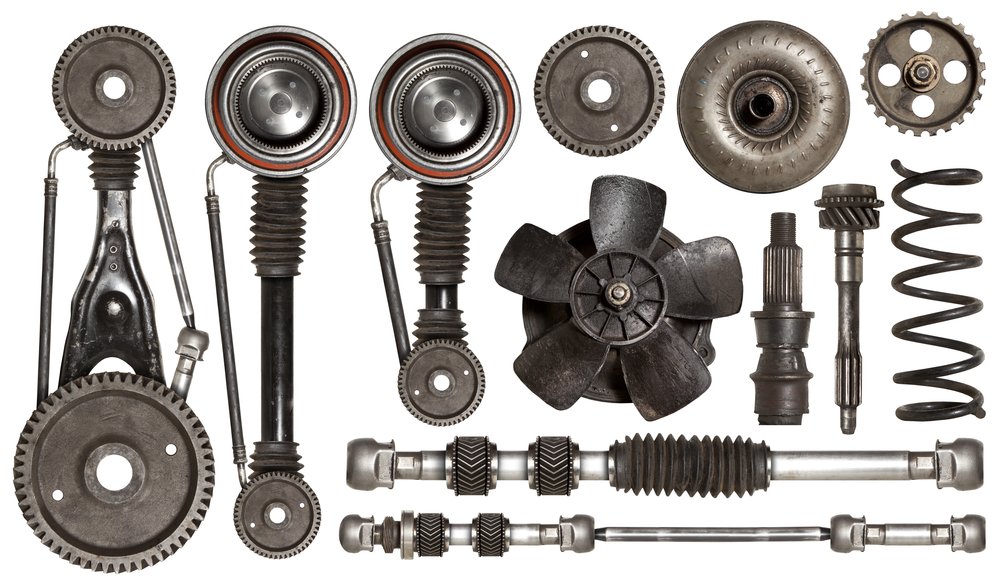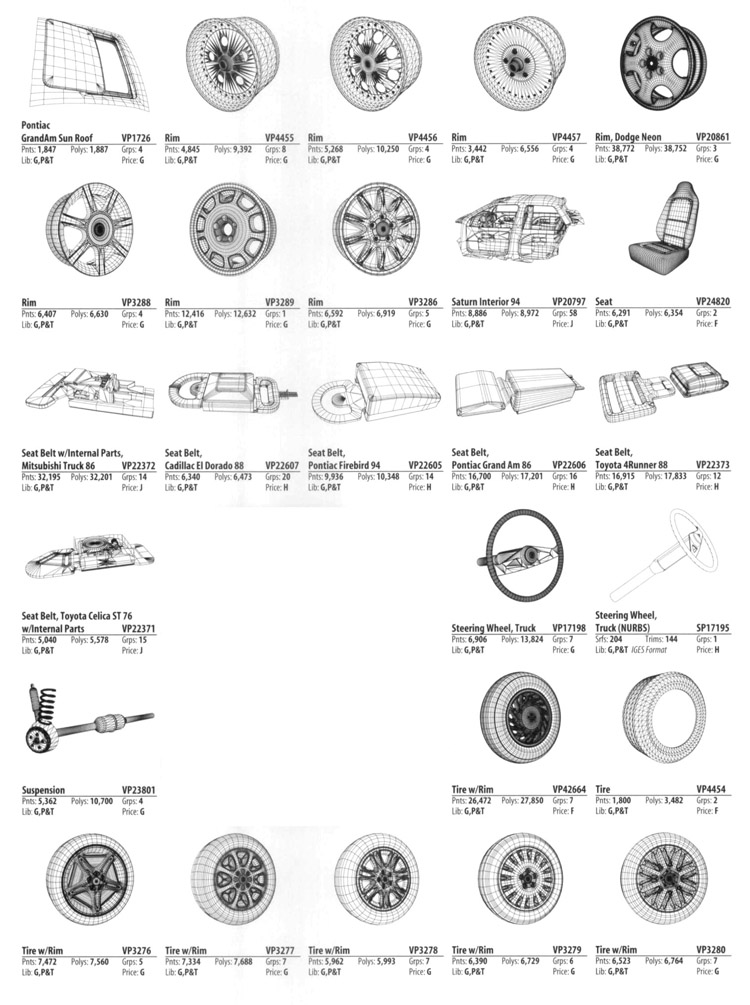When choosing between new and used car parts the condition of the part is vital to the performance, price, and long-term durability. Here are the 10 most crucial tips, as well as their advantages and cons:
1. Know the importance and function of each component
Tip: Prioritise new parts when it comes to critical safety elements (such as steering or brakes).
The advantages: The new components are reliable and reduce the possibility of failure.
Cons: Although used components may be less expensive, they may pose safety risk to systems that are vital.
2. Take into consideration the wear and tear issue
Tip: Consider how the wear of the component can affect its performance. For example, new belts, bearings or filters perform better.
Pros: The new parts ensure optimal performance and durability.
Cons: Good condition used parts may be less durable.
3. How do you determine the component’s durability
Tips: If you are seeking parts that have longevity for example, wheels or body panels (e.g.) or rims, then parts that are used may be the best choice.
Pros: Used products can save you lots of money and still be effective.
Cons: Some issues that are difficult to detect (like damaged or hidden corrosion) might only be discovered in the near future.
4. Check used parts for damage
Be sure to inspect the components that are used prior to purchasing them.
Pros: It ensures that the parts meet a minimum standard.
Cons: It’s impossible to check every part thoroughly Particularly on the internet.
5. Check Availability for New and Used
Make use of old parts to fill in gaps in your collection if you aren’t able to find new ones or they are excessively costly.
The product is specifically designed to keep your car operating smoothly.
Cons: The component could need replacing earlier than it does with a brand new one.
6. Verify the suitability of used parts and their history
Tips. Make sure the part you are using conforms to the specifications of your vehicle, and that it has a track record of service.
Benefits: You are less likely to buy a part that isn’t compatible or defective.
Cons: Limited information on the past of some parts may lead to confusion.
7. Think about refurbished or rebuilt components
Tips: You can find refurbished parts, such as transmissions and alternators, that are a good compromise between new and used.
Pros: Cheap and improved performance compared to the use of parts.
Cons: Quality depends on the process used to refurbish and the reputation of the vendor.
8. Budget Constraints
Make use of used parts for other items that are not essential (e.g. interior trim or accessories).
Benefits: You’ll reduce costs while still meeting your functional needs.
Cons: The parts used may not be as attractive or perform as well.
9. Check for Warranties
Tips: Most new parts are covered by guarantees. However, certain used parts purchased from reputable sellers also come with some guarantees.
Cons: Doesn’t provide peace of mind if there are defects or failures.
Cons: Parts that come with warranties that are in use can be expensive and hard to find.
10. Be aware of the impact of resale value
Tip: Buying new parts for your vehicle can boost its resale worth, particularly if it needs major repairs.
Pros: Buyers tend to buy vehicles that have high-quality replacements.
Con: Recycled components may not be of the same value as new ones.
Final Thoughts on Weighing both Pros and Con
Benefits of New Parts:
Ensured performance, compatibility, and long-term durability.
Usually they are backed by a warranty from the manufacturer.
Best choice when it comes to critical systems and resales.
Cons of New parts
The cost of the initial investment is increased.
The older or rarer cars may be more difficult to find.
The advantages of reusing parts:
Cost-effective, especially for parts that are not critical.
Older or discontinued models are available in greater quantity.
Eco-friendly (recycles materials that are already in use)
Pros and cons of used Parts
Higher risk of defects, wear, or less time to repair.
No or limited warranty
Requires careful inspection to ensure quality.
When choosing between new and used automobile parts, it’s crucial to weigh these suggestions against your budget, needs and goals. Take a look at the top rated elektropiedzina car parts par buick cars for site advice including autosupply reviews, l & e auto parts, auto 7 parts, auto spares, latvia auto parts, parts by parts, auto no parts, give me auto parts, motor spares logo, by auto parts and more.

Top 10 Tips To Consider About The Durability And Maintenance Needs For Car Parts
When buying car parts, think about their longevity and maintenance requirements. This will affect your vehicle’s longevity and overall cost. Here are ten tips that have both pros and cons.
1. The Lifespan of Parts
Tip – Investigate how long the component is predicted to last Based on the manufacturer’s suggestions and prior user experience.
Cons: Doesn’t permit proactive maintenance.
Cons: Lifespan estimates can be affected by driving habits, environment conditions and the level of maintenance.
2. Check for Wear and Tear Resistance
Pick parts with an established reputation for their long-lasting performance, particularly when it comes to high-stress components such as conveyor belts and brakes.
Pros are: It reduces the frequency of replacements and maintenance costs.
Cons: Durable parts may cost more initially.
3. Material Qualitative
Select parts that are made of durable, high-quality materials such as carbon composites, stainless steel or strengthened alloys.
Pros: Quality materials are more durable and take on harsh environments.
Cons: Materials of high-quality could increase the price of the component.
4. Find parts that have resistance to corrosion
TIP: Look for components that are resistant to corrosion, particularly ones that are exposed to moisture such as exhaust systems or brake components.
Pros: Extends the lifespan of the part, especially in areas of high humidity or road salt.
Cons: More expensive parts that are resistant to corrosion.
5. Check the return and warranty policies
See if the warranty covers you. if it covers defective parts or premature failures resulting from issues with durability.
Benefits: A dependable warranty gives peace of mind and can save you money when the part fails to function properly.
Cons: Some warranties are not as broad or may require that you satisfy certain requirements before they can be used.
6. Take into consideration the Maintenance Frequency
Tips: Find parts that require little maintenance. They include sealed components as well as low-maintenance options (e.g. sealed batteries and maintenance-free bearings).
Pros: Reduces the time and money spent on maintaining the component.
Cons: Low-maintenance items can be more expensive upfront or have less repair ability.
7. Choose Easy-to-Replace or Service Parts
Tips: Choose parts that are simple to replace or repair as this will reduce costs for maintenance.
It’s easy to replace or repair it, thereby saving time and money.
Cons: Some parts designed for ease of replacement may not be as durable as more sophisticated counterparts.
8. Also, you can read reviews by other users.
To evaluate the quality of the part, check online reviews or speak with a trusted mechanic.
Pros : It gives real-time information about the durability and maintenance of the parts.
Cons The reviews are subjective and do not always represent the actual requirements or the usage of the product.
9. Consider Reputation
Tips: Buy from companies that have a solid track record of making high-quality and reliable auto parts.
Pros: A trusted brand is likely to produce lasting, high-quality products.
Cons: Branded parts tend to be more expensive than alternatives that are less well-known.
10. Consider durability and cost
Tips: It is important to place the durability first, but ensure that the item is within your budget. Sometimes, you have to weigh durability and price particularly when it comes to less critical parts.
Benefits: You can enjoy long-term savings without overspending.
Cons: Spending too much on parts that aren’t essential could cause frequent replacements, which can cost more over time.
Final Thoughts – Weighing the Pros and Cons
Advantages of Looking at Durability and Maintenance:
Cost-Effective: Durable components make it less necessary to have frequent replacements, leading to long-term savings.
The convenience of low-maintenance components saves you time and effort.
Reliability: Choosing high-quality parts means fewer breakdowns, and a more stable vehicle.
Neglecting durability and maintenance:
Initial Costs: Materials that are of better quality cost more.
Overestimating Longevity. Even the strongest components can fail.
Complexity: Highly durable components could be difficult to replace or repair, which increases labor costs.
By considering these tips to ensure you choose car parts that are not just durable, but also cost-effective and easy to maintain over the life of your vehicle. Follow the top motorella parts for buick cars for site examples including auto consumables, imperium parts, bmw part no, auto parts i, undercar parts, as auto parts, i auto parts, bmw breaker, auto parts by vin number, auto 7 and more.
